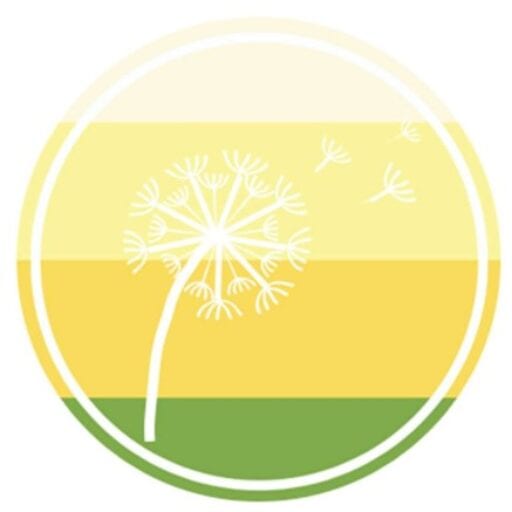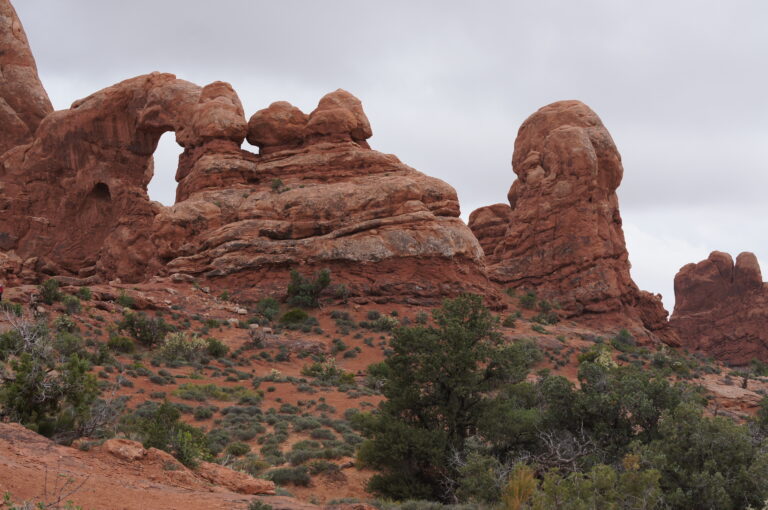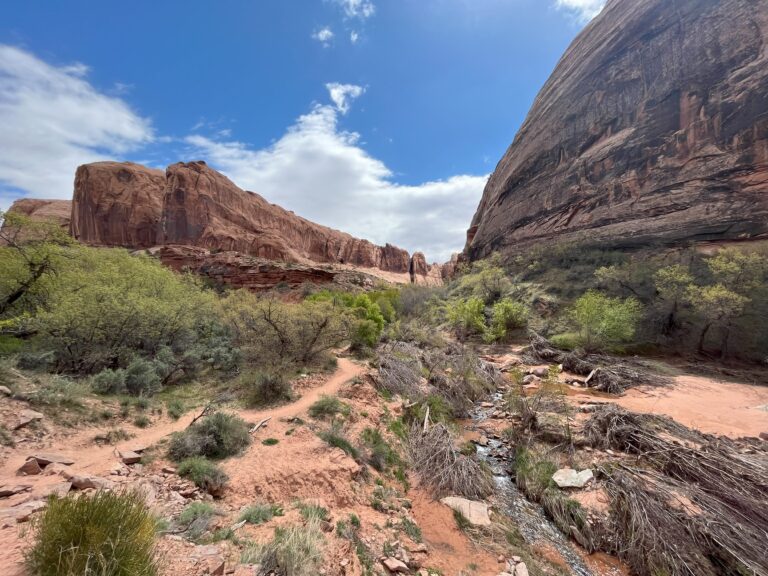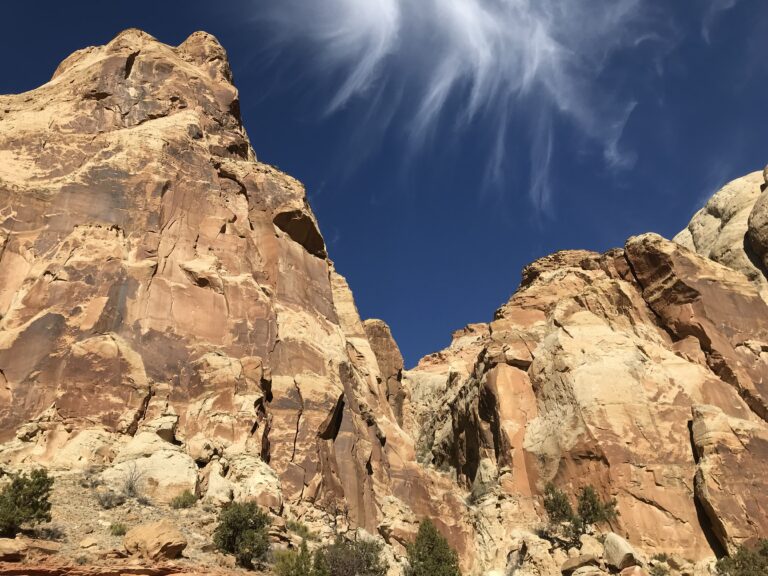What is the National Park in Utah?
Last Updated on March 19, 2024 by Kathryn
This handy infographic can help you figure out what is the national park in Utah with the most crowds and how to avoid them.
You’ve seen the news stories, and it’s true: Utah’s National Parks are SO CROWDED during peak season. Think: hours-long wait just to enter a park, then once you finally make it in, there are no parking spots, and bumper-to-bumper hikers on the trails.
DON’T STRESS! I’ve got all the info that you need to enjoy the national parks in Utah, without the crowds (because who wants to deal with that with kids in tow?).
This post may contain affiliate links, which means I’ll receive a commission if you purchase through my links, at no extra cost to you. Please read full disclosure for more information.
Most crowded park
This infographic can help you pick your park:

Share this Image On Your Site
What is the national park in Utah with the most crowds?
I know, they all seem crowded! Bryce Canyon vs Zion? Maybe Capitol Reef? When is the best time to go to Zion? It’s a bit overwhelming.
We’ve visited Utah’s parks in every season, and experienced both packed and peaceful parks.
Conclusion? Crowds and my little kids just don’t mix (Maybe this is why we’re not big fans of Disneyland).
Wondering which one has the most people per square mile? That would be Bryce. Or, just straight-up biggest number of visitors? That would be Zion.
Use this infographic as a guide to help you plan where and when will work best for you – e.g., Bryce Canyon National Park vs Zion?
Time of Year
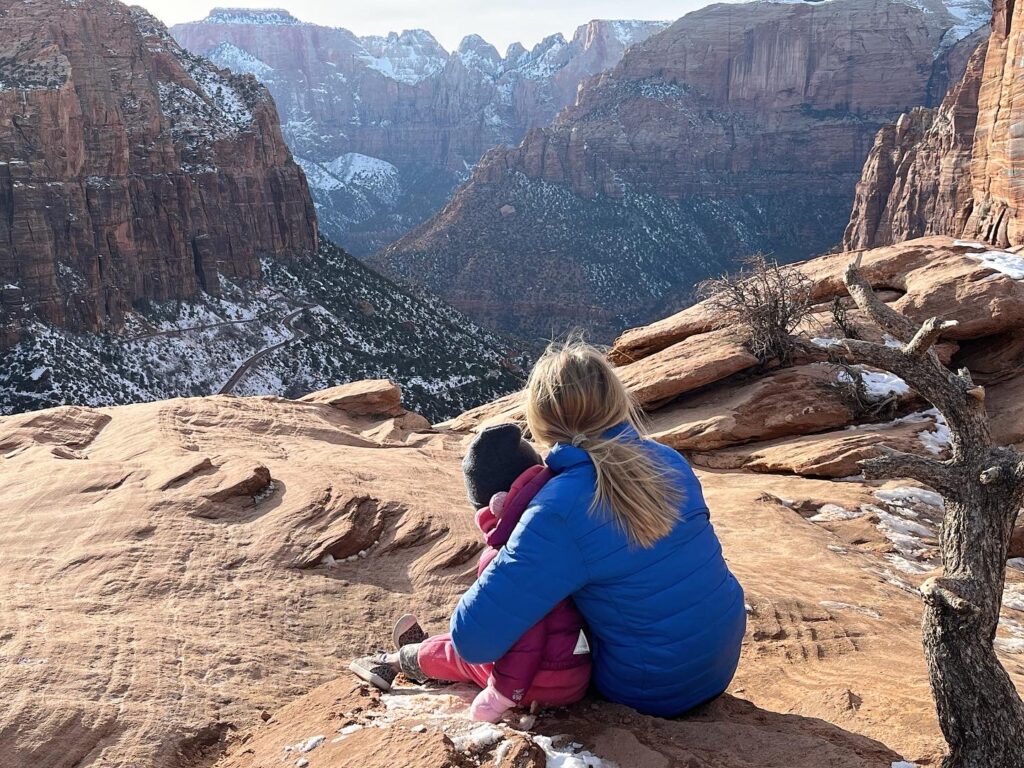
The first thing to carefully consider is the time of year.
DO go in winter. If you want solitude, hands-down the best month to visit Utah parks is winter, particularly JANUARY.
We’ve visited Capitol Reef National Park winter and rarely saw another person on the trails.
We also went to Zion National Park in February and it wasn’t crowded at all!
When I planned this trip, I read other blogs that said that it would still be difficult to find parking because the Zion shuttle service was shut down.
That wasn’t the case for us at all! We were able to drive our own car in the park and we didn’t have any trouble finding parking spots for the trails we wanted to visit.
Winter in Utah’s National Parks can be quite nice, weather-wise. For example, the weather in December in Zion National Park has highs in the upper 40s, which can feel just perfect on a sunny day.
It’s all about being prepared with warm layers, especially for kids. Snow gear like snow pants and boots will help kids keep warm. (Warm kids = happy kids = happy mom)
DON’T go in SUMMER. The parks are packed and the heat can be unbearable.
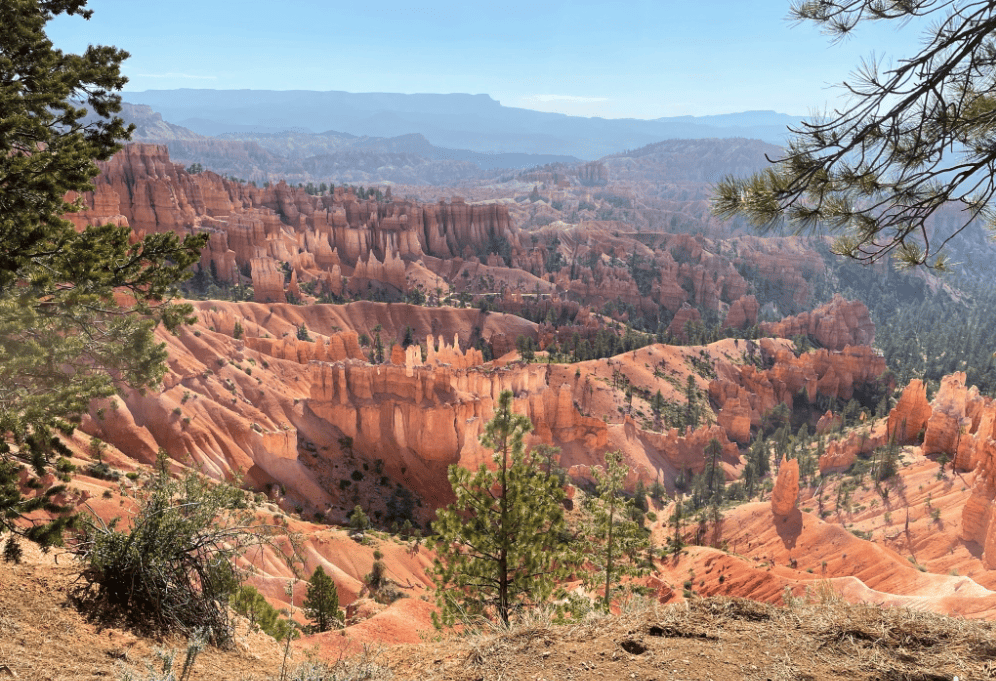
HOWEVER, if summer is the only time you can go, then completely ignore my advice and go. It isn’t ideal, but it’s better than not going.
Even in summer, there are ways of getting away from crowds. For example, if you need to go in June, think about going to Canyonlands or Capital Reef instead of Zion or Bryce since they receive fewer visitors.
Confession: I’ve been to Bryce in June two different times, crowds and all. Yes, it was packed, and yes, I was roasting. I’m still happy that I went. Those hoodoos at Bryce Canyon make it worth it every time!
Maybe you’ve decided to visit Arches during the summer, or maybe even (gasp!) Zion. If so, manage your expectations for crowds and be prepared with water. Lots and lots of water.
If you do decide to during a busier time of year, be sure to book your accommodations well in advance. (Decided on Arches? Here’s a guide to the accommodations in Arches.)
Top tips for beating the crowds

With some flexibility and planning, you can avoid the bulk of the crowds, even during peak season, using these tips.
Be flexible. If a parking lot is full, move on to the next one. There are so many awesome, easy hikes in the Mighty 5 that you’re really not missing out if you have to swap out your planned hike for a different one.
Go early. Can you imagine the red rock against a sunrise?
Imagine the spectacular colors of an Arches National Park sunrise or the sun coming up over the hoodoos at Bryce Canyon.
If you’re like us and have a toddler waking everyone up early, take advantage and check out the sunrise. (I had one child who, for a solid 6 months, woke up at 4 am, so I’d drag everyone on a hike and be back for breakfast by 7 am…fun times)
You won’t be disappointed!
Go late. The majority of tourists head out of the park for dinner. Go in the late afternoon around 4 or 5 pm and catch a sunset in one of the Mighty 5 National Parks.
Stay for sunset. Sunset in any of these parks is not to be missed! The hoodoos in Bryce Canyon National Park turn incredible shades of orange and red. Pack in a picnic dinner and enjoy a Mighty 5 sunset!
Avoid holidays. Holidays, including spring breaks, are very crowded times to go. The winter holidays are also busy. I mentioned above that the weather in December in Zion National Park is lovely, but don’t go during the holidays!
Avoid weekends. Like most anything, weekdays are less busy . Avoid Friday, Saturday, and Sunday and, if possible, go on Tuesday or Wednesday, which typically have the fewest crowds.
Get off the Beaten Path. This is important. Check Alltrails to figure out which hikes are the lease popular. They’ll still be beautiful. If your kids can handle it, do a longer hike (5+ miles). Get as far away from parking lots as possible and the crowds will thin out quickly.
Some more Mighty 5 info
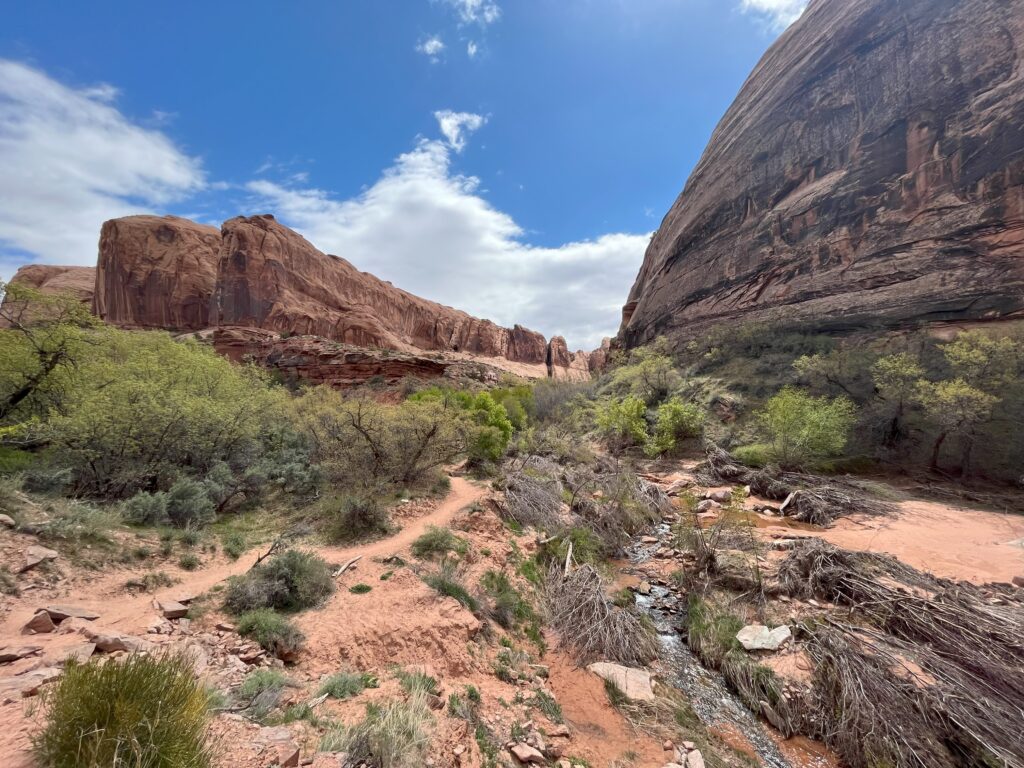
Still wondering what the differences are between the parks?
Some background info:
There are five National Parks in Utah!
Only two other states boast more national parks than Utah: California with nine, and Alaska with eight (Is that news to anyone other than me? I had no idea that Alaska had that many!)
The Mighty 5 are all found in the desert in southern Utah. While they share similar characteristics (think: sand, lots and lots of sand), they are all VASTLY different!
What is the National Park in Utah? There is not just one.
There are FIVE parks total, each with stunning, otherworldly landscapes and fabulous trails for all hiking levels.
However, they are all so different from each other!
In short, here’s what they’re each known for:
Arches – Hike under some of the 2000+ natural stone arches (hence the name, haha). Try some of these fun hikes to do in Arches with little kids.
Bryce Canyon – See the hoodoos at Bryce Canyon, which are tall, thin rock spires
Canyonlands – View the vast canyons and flat mesas created by the Colorado River, creating remote and wild places
Capital Reef – Check out its Waterpocket Fold (a warp in the earth’s crust), which creates cool rock formations
Zion – Slot canyons, epic hikes (e.g. Angel’s Landing and The Narrows – the widely considered the best Zion National Park trails), towering peaks
I can confidently say that they’re all worth visiting (again and again and again).
Before you go
Take some time to learn about the native lands. Checking out the Visitor Centers in each park is a great way to do so. The National Park Service recognizes several native tribes that have a connection to the National Parks in Utah, each with a rich history and culture.
It may be more economical to purchase a National Parks Pass rather than a day pass, especially if you’re wanting to check out multiple parks. (You could easily go from Bryce Canyon National Park to Zion OR Arches National Park to Canyonlands).
The full price for an annual pass is $80, and it is discounted to $20 for seniors (or $80 for a senior lifetime pass).
Federal lands volunteers, military, persons with disabilities, and all 4th graders can get a FREE pass!
Do your part to protect our parks! Practice these Leave No Trace Principles:
- Plan Ahead and Prepare
- Travel and Camp on Durable Surfaces
- Dispose of Waste Properly
- Leave What You Find
- Minimize Campfire Impacts
- Respect Wildlife
- Be Considerate of Others
Also, please don’t carve on the rocks and stay off the cryptobiotic soil!
That, of course, depends on what you’re looking for! I’ve got a whole post to help you decide which of the Mighty Five to visit first.
(I love them all, but those hoodoos at Bryce Canyon just might be my favorite view of all time.)
You really can’t go wrong with any of them, as long as you pick the right time of year.
Tips for hiking with kids
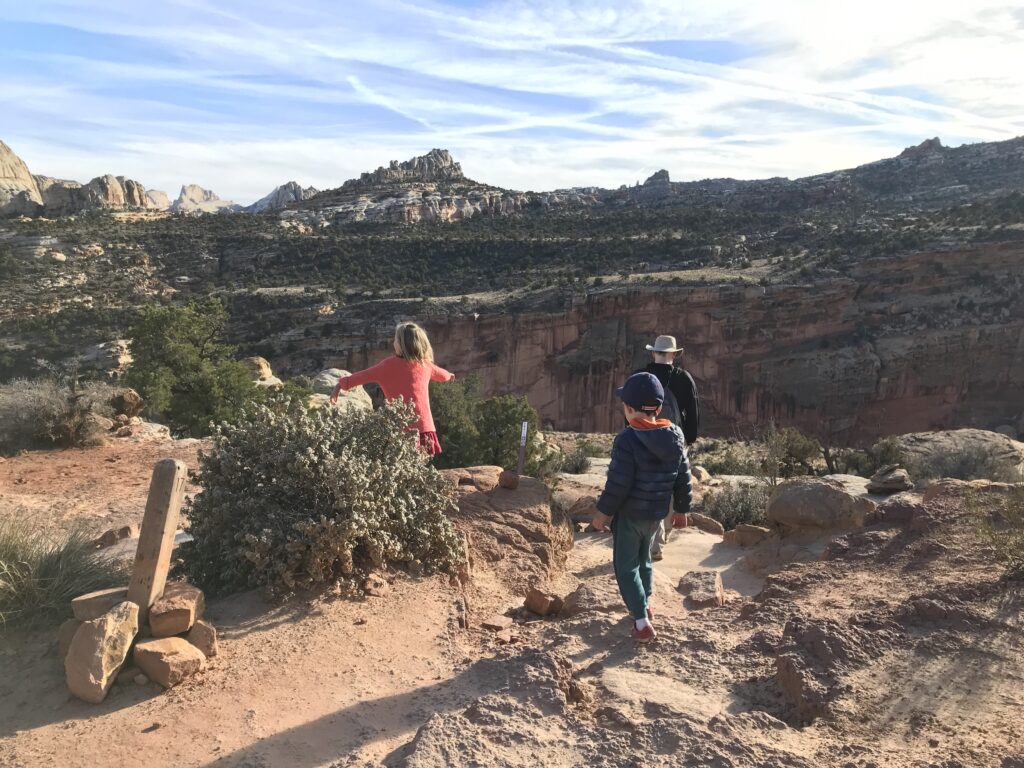
– Wear old clothes – it’s tough to get that red sand out!
– Speaking of sand, expect to have red sand in your car for weeks (or months or even years) to come. Think of it as a souvenir!
– Kids tend to be much more willing to hike when they are appropriately dressed for the weather (at least ours are!). The desert can be cold at night, even in the summer nights.
– Have lots of snacks on hand. A little treat goes a long way!
– Sunscreen up every 2 hours. That desert sun is strong, even in winter.
– Take more water than you think you’ll need. It’s easy to get parched in the dry desert air.
(Psst…If you’re branching out from the national parks, there are some incredible hikes in northern Utah too.)
Pets are not allowed in most places in Utah’s National Parks, including hiking trails.
My final recommendation? Just go!
